How to analyze your PMP Exam Scorecard?
Transcript
Preface
Hello & Welcome! Today, I'm going to explain to you the PMP Exam Results Report. You might be aware that when you write the PMP exam at the Prometric Center, you get to see your results immediately on the display. This means that it takes about a couple of minutes once you submit your final responses to all your answers and then it does some grinding and after about two or three minutes you get to see the results as PASS. Of course, there may be some people who may get a FAIL score also. So today, I'm going to explain to you, how the PMP Exam results report looks like.
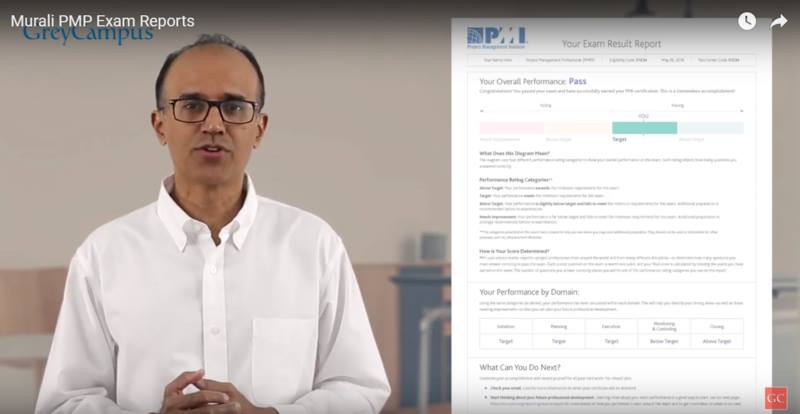
Performance Score
This is the report you receive at the Prometric center; a printout or a copy of it with the seal on it from the Prometric Center as an evidence of you have been cleared the exam or whatever the results are. There are three sections in the Result Scorecard. The top section is mainly the overall performance score.
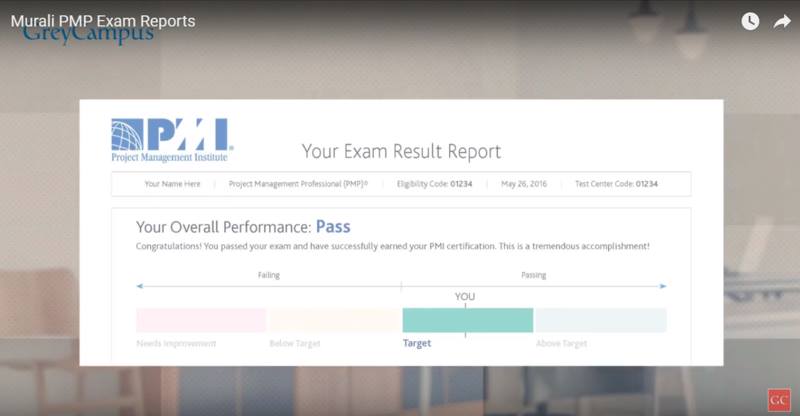
This performance score will tell you that you have passed the exam or not. It actually has four ranges: (i) Above target, (ii) On target, (iii) Below target, and (iv) Need improvement.
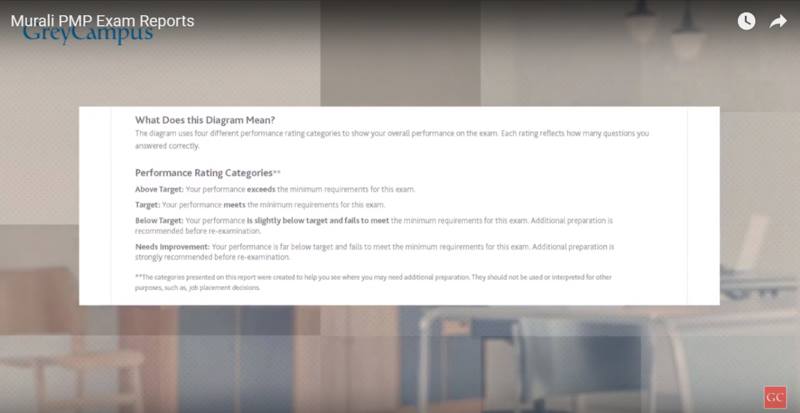
You have to be on the target or above target range in order to pass the exam so there will be a needle showing your position in that range. So, as long as it is on target and above target, you have passed the exam. It should not be on the below target and needs improvement, so this is the first part of it. The second part is slightly down. You will also see an analysis of your score by each process group.
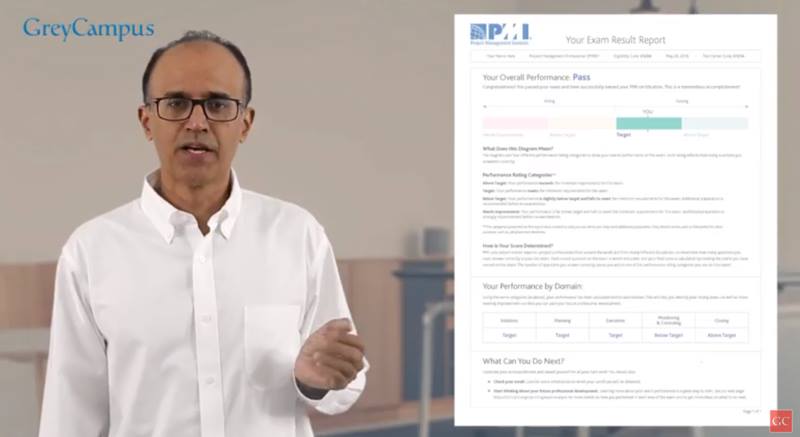
Process Groups
As you know, there are five process groups:(i) Initiating (ii) Planning (iii) Executing (iv) Monitoring and Controlling, and (v) Closing. So, you see similar scores in each one of those areas. You could see for example, on target or above target in Initiating. You could see on target or above target in Planning or you might see below target in Executing and so on.
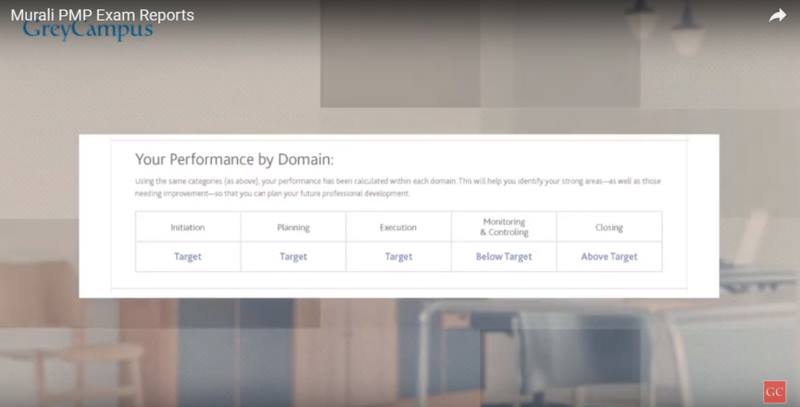
By the way, it is okay to be below target on one of those areas or maybe even a couple of areas. Nobody knows those secrets or the PASS code for the exam and also, what is the minimum combination of score you need in order to pass the exam. This is because it's a psychological and an educational testing. So, I've covered you actually the overall score how it looks like and also the domain-wise score how it looks like.
You may also like: Top 10 tips to crack the PMP exam in your first attempt
There is also a third section at the bottom which is a simple section in terms of what to do further. You can actually look at your email to receive your report it might take a couple of days before you see the report. And there's also a link there in order to look at options for developing your career. So, that finishes off the explanation of this report.
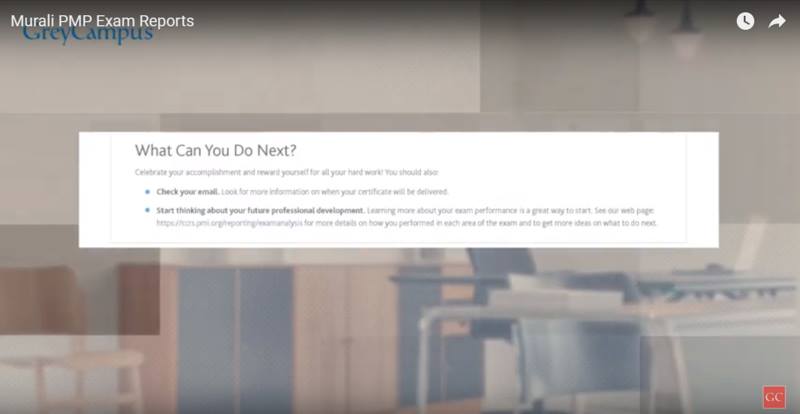
CCRS - Continuing Certification Requirement System
Now, you can also do one more thing. Apart from this physically printed report, you can log into the CCR System. The CCRS means Continuing Certification Requirement System. If you log into that system with your PMI credentials you get to see a very similar report but it has got an additional section.

Analyzing the PMP Scorecard Report
So, let me explain to you how it looks like. At the top as always, you have the overall performance score which could be above target, on target, below target or needs improvement. In this case, you see the situation here.
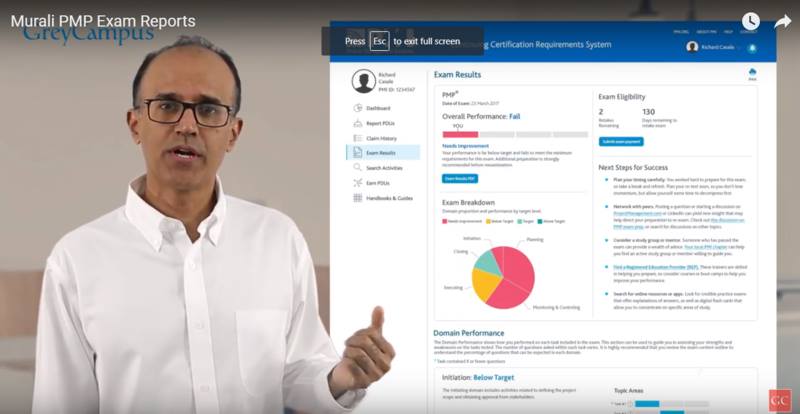
The second section is again the domain-wise or the process group-wise just that you don't see a table here but you see a pie chart which shows you different colors about your performance in the different process groups. Now, you already are aware of this because you saw this in the printer report, maybe in a slightly different way.
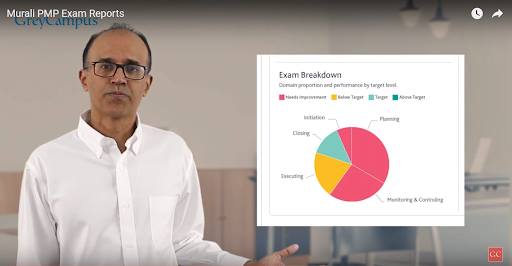
The more important thing what you see here is a detailed analysis of every task in the exam. You might recollect the exam syllabus for PMP. Referring to the Exam Content Outline which you can download from the PMI website. Remember if you go to the PMI website, and go to the PMP applications webpage on the right side there; you see two documents: (i) the PMP Certification Handbook and (ii) the PMP Exam Content Outline.
You may also like: How to Create PMP Study Plan? | PMP Exam Success Tips and Basic Planning
If you download the Outline document, it has got several sections - Initiating, Planning, and so on. Initiating has got eight tasks, Planning has got thirteen tasks, the remaining have got seven tasks each which mean Execution, Monitoring, and Closing have got seven tasks each.

So the same thing you could see here. So, for example, Initiating you can see in task number one - where you stand, task number two - where do you stand so here the report is it shows you the range of low, medium and high. So, task one - Are you low, medium or high? Similarly, task 2 shows low medium or high and so on covering all the 42 tasks from all the process groups or performance domains.
Important Tips to pass the PMP Exam
Now that I have spoken about the two reports - the printed report and the report what you see on the CCR System. I would like to leave you with a couple of important tips for passing the PMP exam. Tip#1: You should do a good practice of quality questions and also understand the subject very thoroughly. This is really important and the Tip#2 is to remember to apply the PMI standards of Project Management in the exam question responses which means the PMBOK guide has all the processes but there's also an appendix in the PMBOK Guide, which are the standards of Project Management. The standards are the same as what you will read in the PMBOK Guide but it's a more condensed version of all the ITTOs without the tools and techniques listed there. So, please study that appendix also so that you can refresh your knowledge about all the best practices of Project Management as done by the PMI.
You may also like: Top 30 Project Management Interview Questions and Answers (updated for 2018)

Conclusion
We will be back again with one more video soon in which I will talk about how to grow your career once you are PMP certified. This means what kind of jobs you can apply for, should we move out or remain in the same company and so on, those dilemmas we will address. And also there are some amazing reports from PMI like the Pulse of the Profession Report and Report about the growth of the Project Management industry and the opportunities in the industry across the globe in various disciplines and industries.
So with that, I would like to finish today's talk and thank you for your valuable time watching this lecture and wish you good luck and good preparation for your PMP exam. Take care!
Get PMP certified | Get Hired!